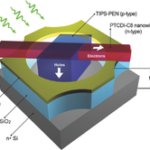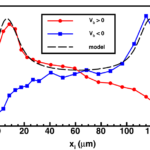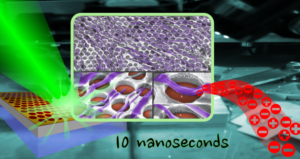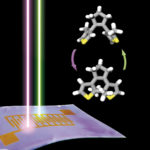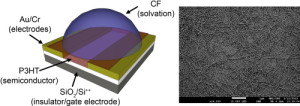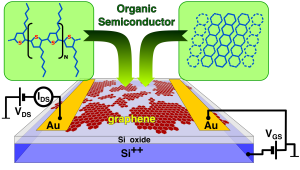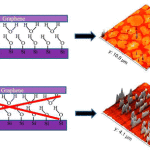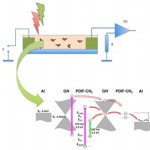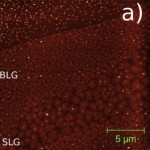We have studied submonolayer coverages of N,N-1H,1H-perfluorobutyl dicyanoperylenecarboxydiimide (PDIF-CN2) on mechanically exfoliated graphene transferred onto SiO2 substrates. Our atomic force microscopy (AFM) data show that PDIF-CN2 forms irregularly-shaped 1.4 nm-high islands. From the selected area diffraction performed with transmission electron microscope (TEM) we conclude that this height corresponds to stacks of molecules, which are inclined for 43° relative to the graphene surface. AFM also showed complete absence of PDIF-CN2 on single-layer graphene (SLG). Electric force microscopy revealed a marked difference in surface charge density between a single-layer graphene and bilayer graphene, with a higher surface charge on SLG than on the bilayer graphene. We associate this behavior with type doping of graphene due to the electrostatic dipole induced by the molecular water layer present at the graphene/SiO2 interface. The crucial role of the graphene/SiO2 interface in determining growth of PDIF-CN2 was further confirmed by TEM examination of PDIF-CN2 deposited onto unsupported SLG. The results are published in Surface Science.
Archives
- May 2025
- July 2024
- March 2024
- August 2023
- June 2023
- November 2021
- April 2021
- March 2021
- January 2021
- December 2020
- September 2020
- May 2020
- December 2018
- November 2017
- September 2017
- August 2017
- March 2017
- January 2017
- October 2016
- June 2016
- October 2015
- March 2015
- October 2014
- April 2014
- January 2014
- June 2013
- May 2013
- January 2013
- September 2012
- July 2012
- June 2012


